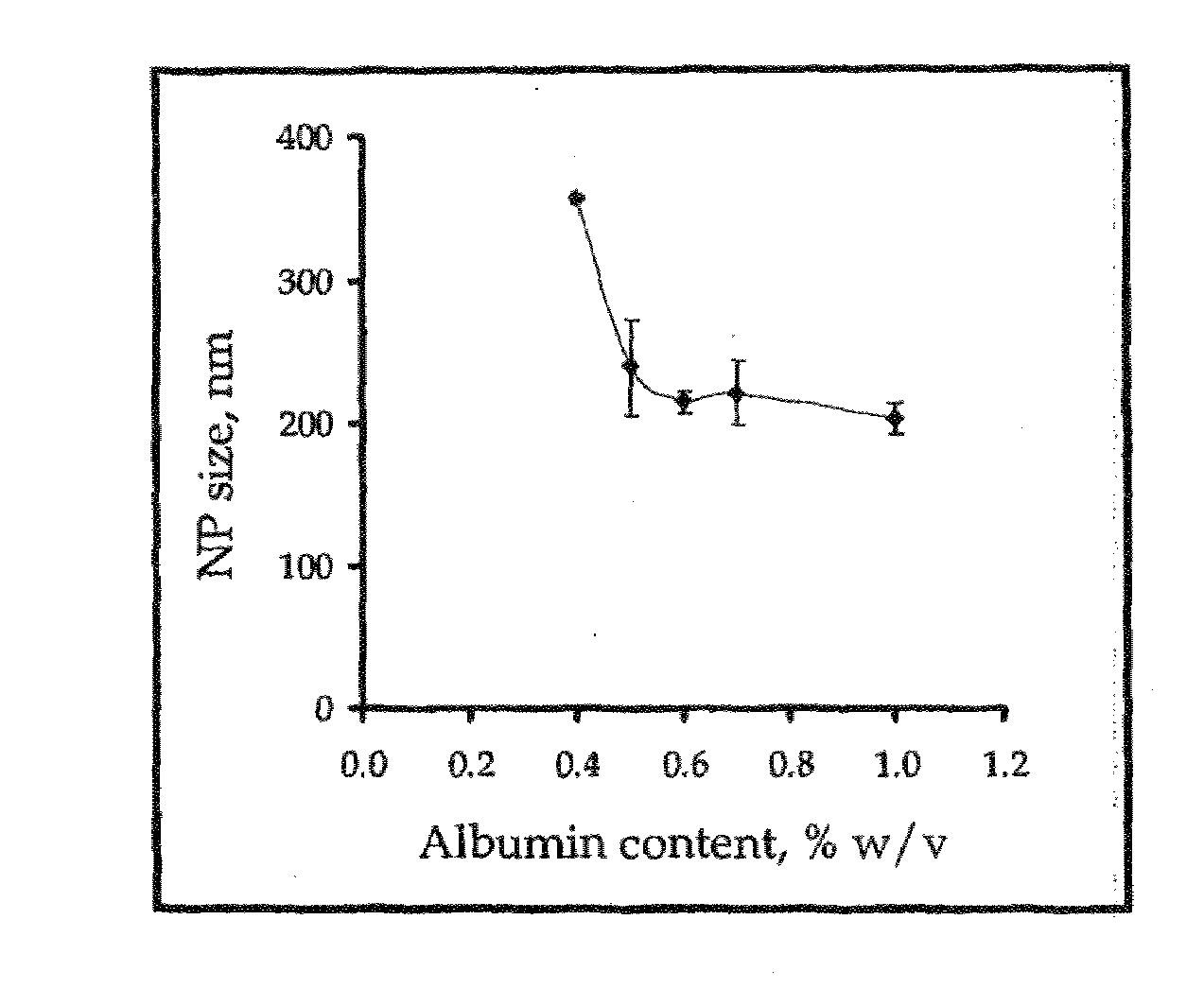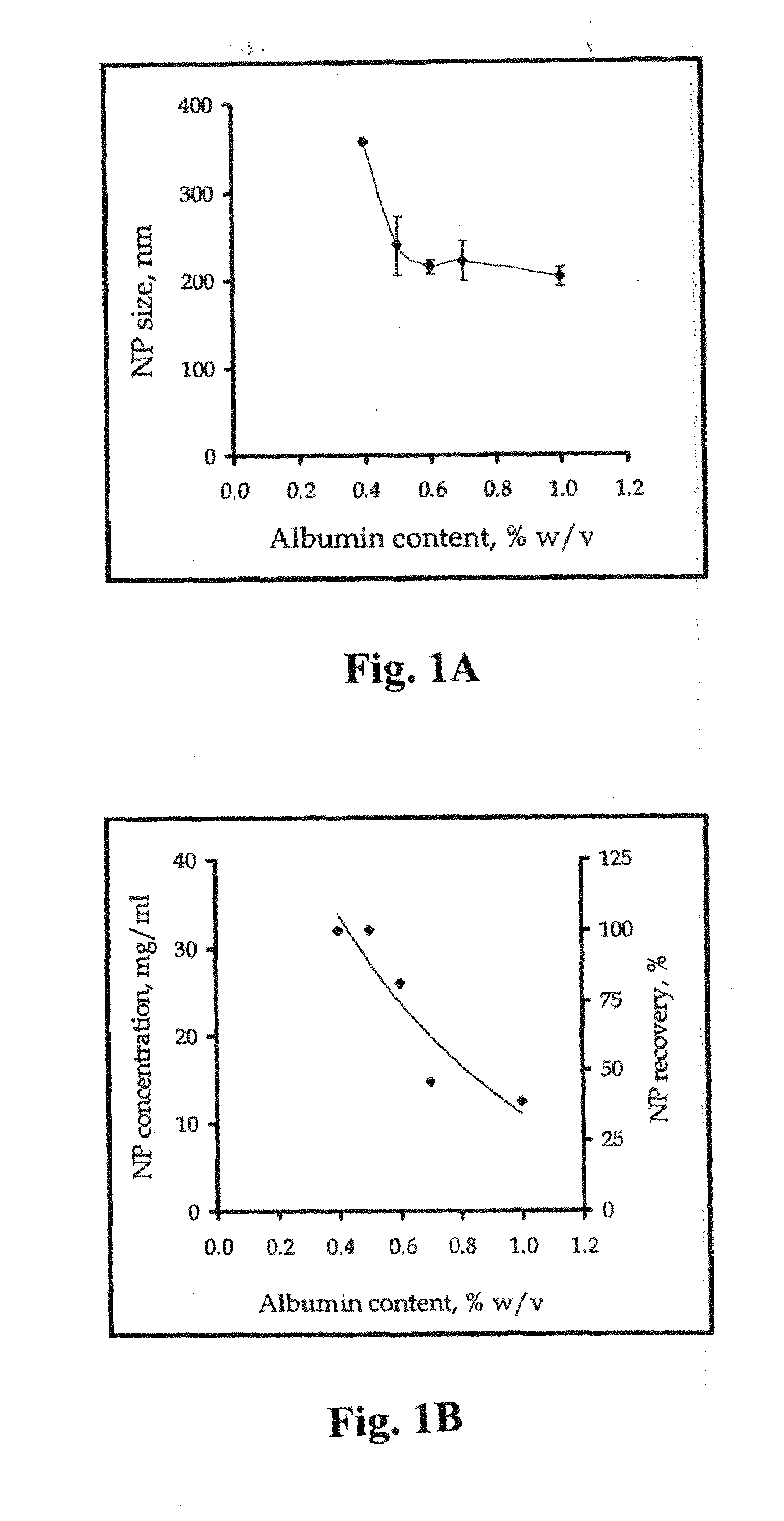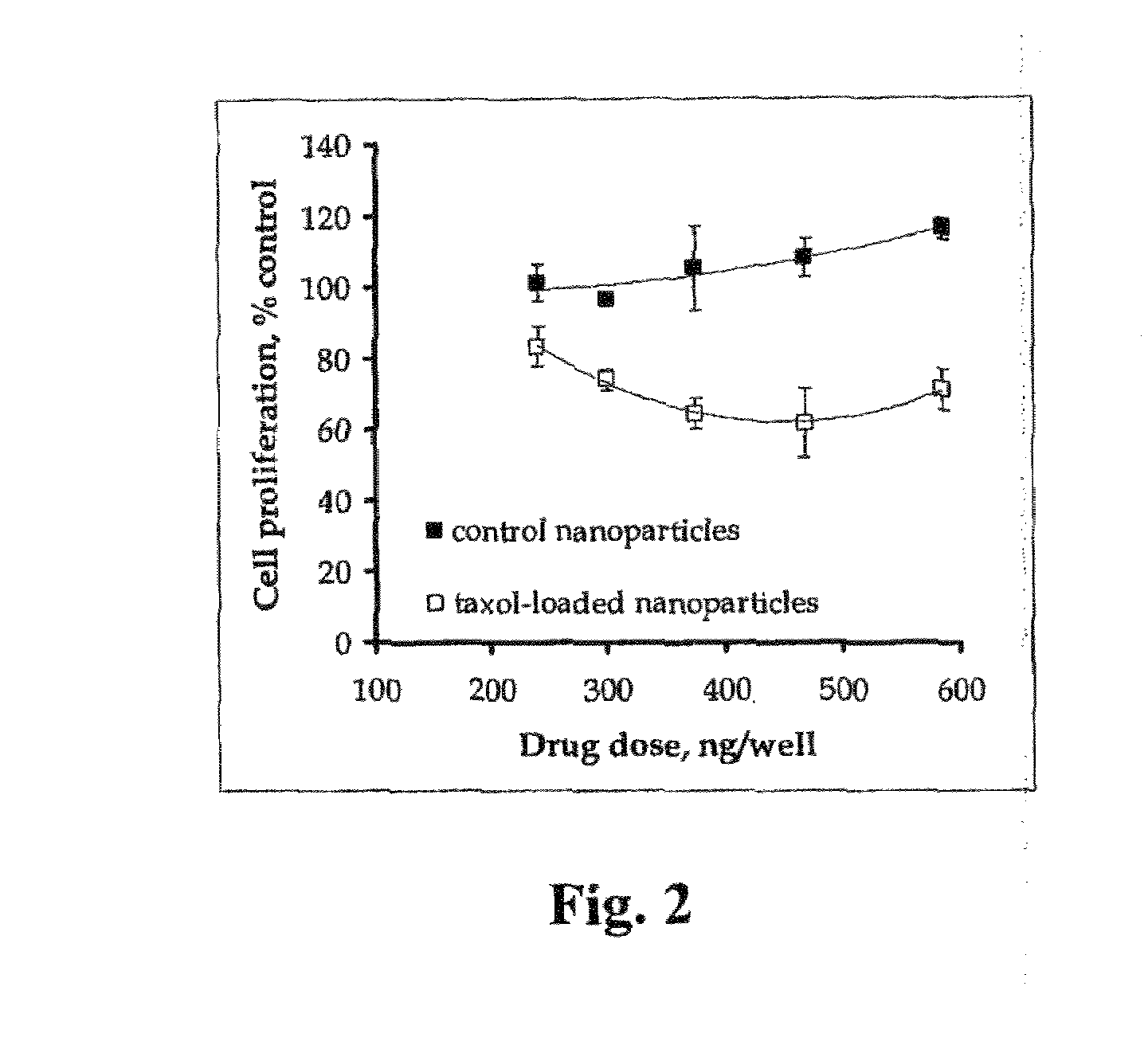Uniform field magnetization and targeting of therapeutic formulations
a therapeutic formulation and magnetization technology, applied in the field of biotherapy, can solve the problems of increased dosing at a higher cost, adverse effects, adverse effects, and unwanted pharmacological responses, and achieve the effects of reducing the bioavailability, adverse effects, and reducing the safety of us
- Summary
- Abstract
- Description
- Claims
- Application Information
AI Technical Summary
Benefits of technology
Problems solved by technology
Method used
Image
Examples
example 1
Preparation of Non-Magnetic. Stabilized Nanoparticles Comprised of Anionic Lipid Salt
[0102]Sodium oleate was formed by dissolving oleic acid (100 mg) in 5 ml aqueous solution containing 14.8 mg sodium hydroxide with gentle heating to 40° C. Albumin solution (10%, 0.4 ml) was added to the aqueous sodium oleate. Calcium chloride aqueous solution (111 mg in 5 ml) was added dropwise resulting in formation of nanoparticles exhibiting a characteristic bluish opalescence due to the Tyndall effect. The nanoparticle size was 230±20 nm as determined by photon correlation spectroscopy.
[0103]To prepare a stable aqueous suspension of mixed iron oxide (magnetite), ferric chloride hexahydrate and ferrous chloride tetrahydrate (100 mg and 50 mg, respectively) are dissolved in 4 ml deionized water and precipitated by 1.6 ml of aqueous sodium hydroxide (1 M). Sodium oleate (150 mg in 5 ml deionized water) is then added to the resulting precipitate. The magnetite precipitate is resuspended in the form...
example 2
Incorporation of a Neutral Lipohilic Agent into Magnetic Nanoparticles
[0105]This example shows the incorporation of a neutral lipophilic agent, such as taxol, into magnetic nanoparticles, by adding its concentrated solution in a small volume of a biocompatible water-miscible solvent, to the ferrofluid containing the anionic lipid and the stabilizer.
[0106]Taxol-loaded nanoparticles were prepared as in Example 1. Taxol, 1.0 mg in 10 μl dimethylformamide, was added to the ferrofluid containing the anionic lipid and the stabilizer and the nanoparticles isolated as in Example 1.
[0107]The effect of taxol-loaded magnetic nanoparticles in comparison to an equivalent dose of nanoparticles containing no drug on proliferation of cultured rat aortic smooth muscle cells following 15 min incubation under magnetic field (500 G) was determined using Alamar Blue assay (λexcitation=540 nm, λemission=575 nm). The cells were seeded on a 96-well plate at 10% confluency, and the cell proliferation was me...
example 3
Preparation of All-Trans Retinoic Acid-Loaded Magnetic Nanoparticles
[0109]The formulation method described above is suitable for preparing nanoparticles with ionic compounds through their inclusion as their water-insoluble complexes. All-trans retinoic acid (atRA) sodium salt, an anticancer agent, is an anionic lipid that readily complexes with calcium, and provides an example of an ionic substance that can be incorporated into nanoparticles.
[0110]A formulation containing atRA was prepared as described in Example 2 with the following modifications. Magnetite aqueous dispersion was prepared in 4 ml water containing 100 mg sodium oleate. All-trans retinoic acid (50 mg) was dissolved in 1 ml aqueous of sodium hydroxide (6.7 mg) and added to the magnetite dispersion prior to the dropwise addition of calcium chloride in the presence of albumin.
PUM
| Property | Measurement | Unit |
|---|---|---|
| size | aaaaa | aaaaa |
| temperatures | aaaaa | aaaaa |
| size | aaaaa | aaaaa |
Abstract
Description
Claims
Application Information
 Login to View More
Login to View More - R&D
- Intellectual Property
- Life Sciences
- Materials
- Tech Scout
- Unparalleled Data Quality
- Higher Quality Content
- 60% Fewer Hallucinations
Browse by: Latest US Patents, China's latest patents, Technical Efficacy Thesaurus, Application Domain, Technology Topic, Popular Technical Reports.
© 2025 PatSnap. All rights reserved.Legal|Privacy policy|Modern Slavery Act Transparency Statement|Sitemap|About US| Contact US: help@patsnap.com



